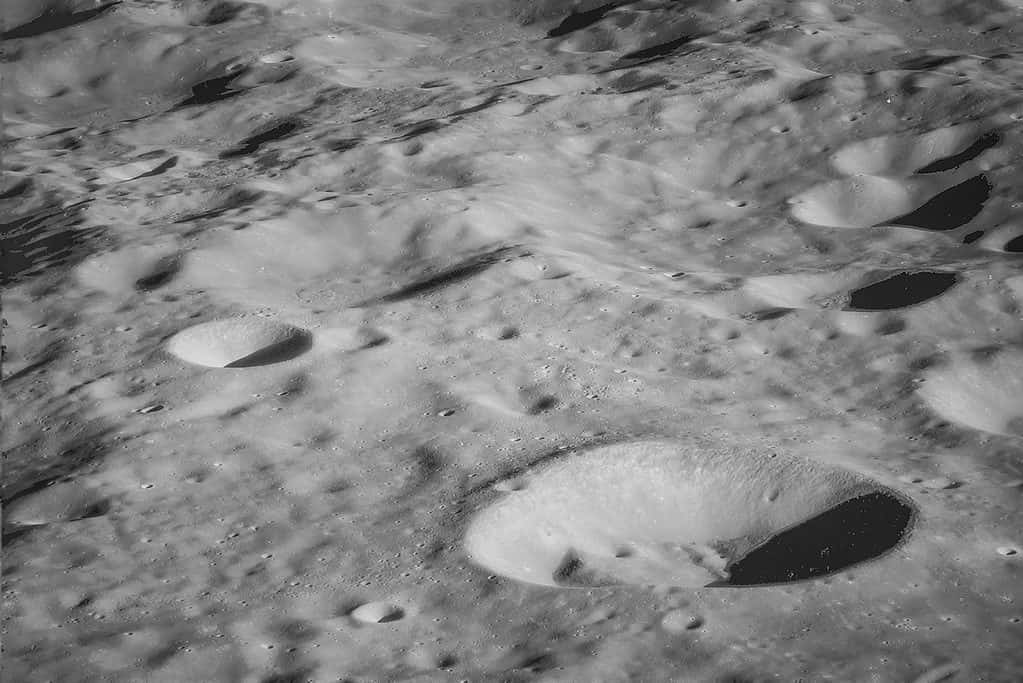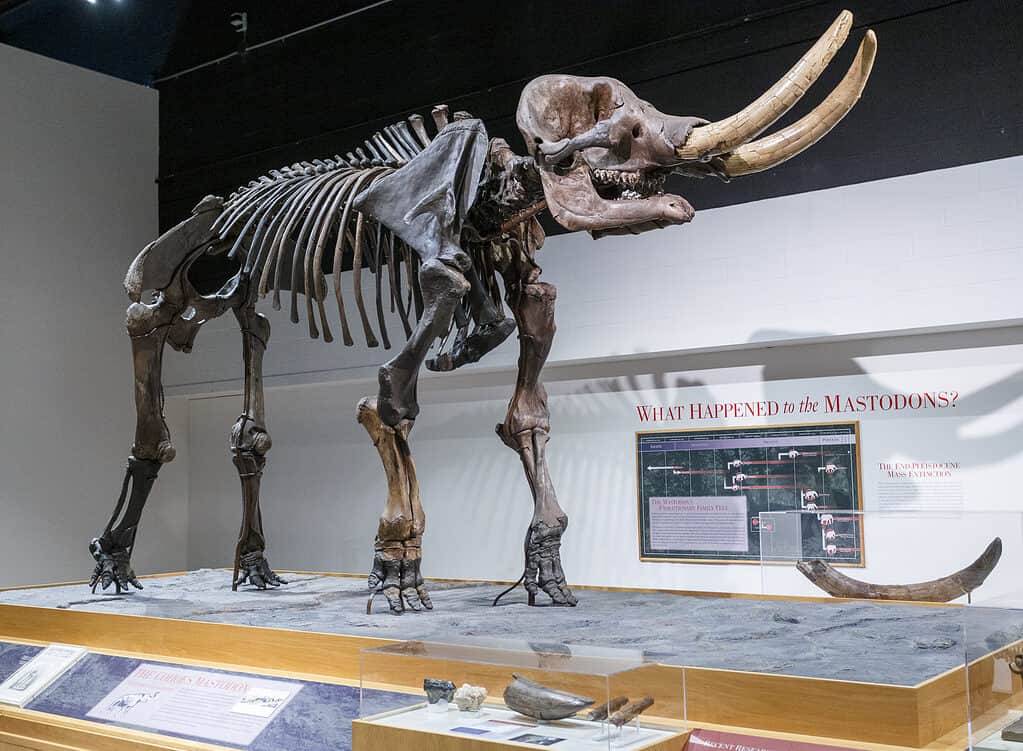Known for corn and fields and unending landscapes of the same hue, Iowa may not be the first place you think of when you inquire about impact craters. In fact, you probably think of Crater Lake in Oregon or maybe the pink water-filled Lonar Crater in India.
But did you know that Iowa is home to one of the largest impact craters in the country? The Manson Crater is the largest impact crater in Iowa. It is located near an unfamiliar town (Manson), with a population of less than 2000 people. Of course, the invisible nature of the Manson Crater doesn’t help folks’ awareness of it. The size would typically make it a huge tourist destination, but the crater wasn’t even recognized for what it is until the 20th Century.
Let’s take a look at this massive crater.
What is an Impact Crater, and How Is It Formed?

Crater Lake in Oregon is the deepest lake in the United States and potentially the most famous impact crater in the country.
©Wollertz/Shutterstock.com
Impact craters are formed by the collision of an asteroid or meteorite with the Earth or some other heavenly body. If you look into the sky at night and notice the “dots” and divots on the surface of the moon, you’ll be looking at craters there.
A true impact crater, though, may only be formed by an object traveling at significant speeds – many thousands of miles per hour. When the object hits, a crater is formed by the impact of the massive object, plus massive speed.
The object creating such a crater is instantly vaporized, creating massive shock waves through the ground, melting and recrystallizing rock. When things settle, a circular divot, hole, or crater is left behind.
Major Parts of an Impact Crater

Famous craters on the moon help show the various parts of an impact crater.
©Digital Images Studio/Shutterstock.com
We might think of craters as merely “holes” in the ground where an object strikes the earth. However, there are several parts to an impact crater.
- The Floor, which is the bottom of the crater and is bowl-shaped or flat, typically below the ground level nearby.
- Central peaks, which are formed at the center of the floor of the crater. Larger craters usually have these peaks that collapse in on themselves, but the material in smaller craters pushes upward, forming mounds into central peaks. The rock beneath bounces back, adding to the peak.
- Walls, or the steep interior sides of the crater. Sometimes, they have stair-shaped terraces created by slumping produced by gravity.
- The rim, or the edge of the crater, is elevated above the terrain around.
- Ejecta, or the rock material is thrown from the crater by the impact of the massive, speeding object.
- Rays, or the bright streaks that extend away from the center, often for long distances, are made up of the ejecta.
Biggest Impact Crater in Iowa: The Manson Crater

No visible evidence of the Manson Crater exists due to the crater being covered by glacial till.
©SevenMaps/Shutterstock.com
For much of America’s history, the Manson Crater in Iowa went unnoticed. This massive crater, some 74 million years old, as estimated, has no surface evidence observable by the naked eye. In fact, the landscape is flat, with the crater evidence hidden between 66 and 295 feet beneath the surface. So, when you look at maps, there’s nothing to see. No tourist hotspot has sprung up nearby, drawing in thousands. Instead, it lies under the southeast corner of Pocahontas County, silently extending under portions of another three adjoining counties.
Research into the area began in 1955, after reports from drill cuttings in 1912 and later of deformed rock “crystalline clast breccia with melt matrix.” Initially, the crater was labeled a crypto volcanic structure, presumed to be a volcanic steam explosion sometime in the ancient past. In 1959, though, more research was conducted, followed in 1966. Shocked quartz grains confirmed that the structure was not some volcano past but rather a massive impact crater.
Between 1991 and 1992, the U.S. government conducted a Geological Survey, specifically looking into the possibility that the impact which formed the crater might have been the cause of the extinction of dinosaurs. Ultimately, though, testing determined the impact event was not the cause, as the crater formed approximately 9 million years older than the extinction of dinosaurs.
Estimated Time the Manson Crater Formed
The Manson Crater is believed to have formed approximately 74 million years ago. A stony meteorite, approximately 1.2 miles in diameter, is the believed impactor. At the time, this part of Iowa is believed to have been the shoreline of a shallow inland sea, the Western Interior Seaway.
Diameter of the Manson Crater
Roughly 24 miles in diameter, the Manson Crater is one of the largest in the United States. Granite, gneiss, and shales of the Precambrian basement were all disrupted and moved during the impact, while the Iowa hard water and limestone layers were instantly vaporized on the impact of the meteorite. Soft water remains in Iowa to this day in the area.
Where is the Manson Crater Located on a Map?
As you can guess from the name of the cater, the Manson Crater is located near Manson, Iowa. The crater isn’t visible to the human eye and is difficult to detect, but the town still celebrates its significance with the Greater Crater Days during the last full weekend of each June. The small town welcomes visitors with charming buildings, shops, and restaurants, with the festival in full swing for the weekend.
About Manson, Iowa, Home of the Manson Crater
Situated in Calhoun County, Iowa, Manson has a population of approximately 1,700 people as of the 2020 Census. The town was platted in 1872 along the Dubuque and Sioux City Railroad line. Apart from being known for the Manson Crater, the town is also known for a dangerous tornado that hit in 1979, killing three people and destroying much of the town. It’s also located near the town of Pocahontas, where a 25-foot-tall statue of the Native American heroine stands roadside.
Other Craters in Iowa
A second known impact crater exists in Iowa: the Decorah Impact Structure. Approximately 3.t miles in diameter, the crater is located on the east side of Decorah, Iowa. Belief goes that the crater was formed roughly 470 million years ago by a 660-foot-wide meteor striking the Earth. The resulting impact evidence is covered by Winneshiek Shale and also bears no surface evidence, being more than 50 feet below the Upper Iowa River.
What Animals Lived When the Meteors Struck?

Mastodons lived in Iowa when the Manson meteorite struck some 74 million years ago.
©Kenneth C. Zirkel, CC BY-SA 4.0 <https://creativecommons.org/licenses/by-sa/4.0>, via Wikimedia Commons – Original / License
At the time of impact, the Cretaceous Period was in full swing. This means that mastodons and mammoths roamed Iowa, along with hadrosaurs, raptors, and tyrannosaurs. Fossil evidence indicates the impact was some 9 million years before their extinction. Marine fossils found in the area indicate that an inland sea existed in the region, as well. Therefore, many marine animals and mammals, invertebrates, corals, snails, clams, sharks, trilobites, and others were present.
What Animals Live in Iowa Today?

Lemmings are among some of the most adorable mammals found in Iowa today.
©Angelica Klingberg/Shutterstock.com
You’ll find the fossils of dinosaurs, mastodons, and mammoths in museums and interpretive centers throughout Iowa today, along with many living creatures that have adapted to the local environment and human activity.
- Larger mammals are present in Iowa, including white-tailed deer, American bison, grey foxes, dire wolves, North American river otters, big brown bats, Virginia opossums, little brown bats, Indiana bats, and white-tailed jackrabbits.
- Smaller mammals in Iowa include Eastern chipmunks, various mice species, voles, rats, squirrels, prairie dogs, ground squirrels, gophers, muskrats, lemmings, beavers, woodchucks, moles, and shrews.
- Notable bird species that wing their way through Iowa include gold finch, house finch, woodpeckers, Pileated woodpeckers, robins, sparrows, chickadees, cardinals, blue jays, starlings, mourning doves, house wrens, orioles, American white pelicans, siskins, snow geese, and red-tailed hawks.
- Reptiles and amphibians aplenty live in Iowa, as well, including skinks, race runners, glass lizards, rat snakes, brown snakes, bull snakes, copperheads, Massasauga rattlesnakes, milk snakes, and many varieties of turtles.
Thank you for reading! Have some feedback for us? Contact the AZ Animals editorial team.








